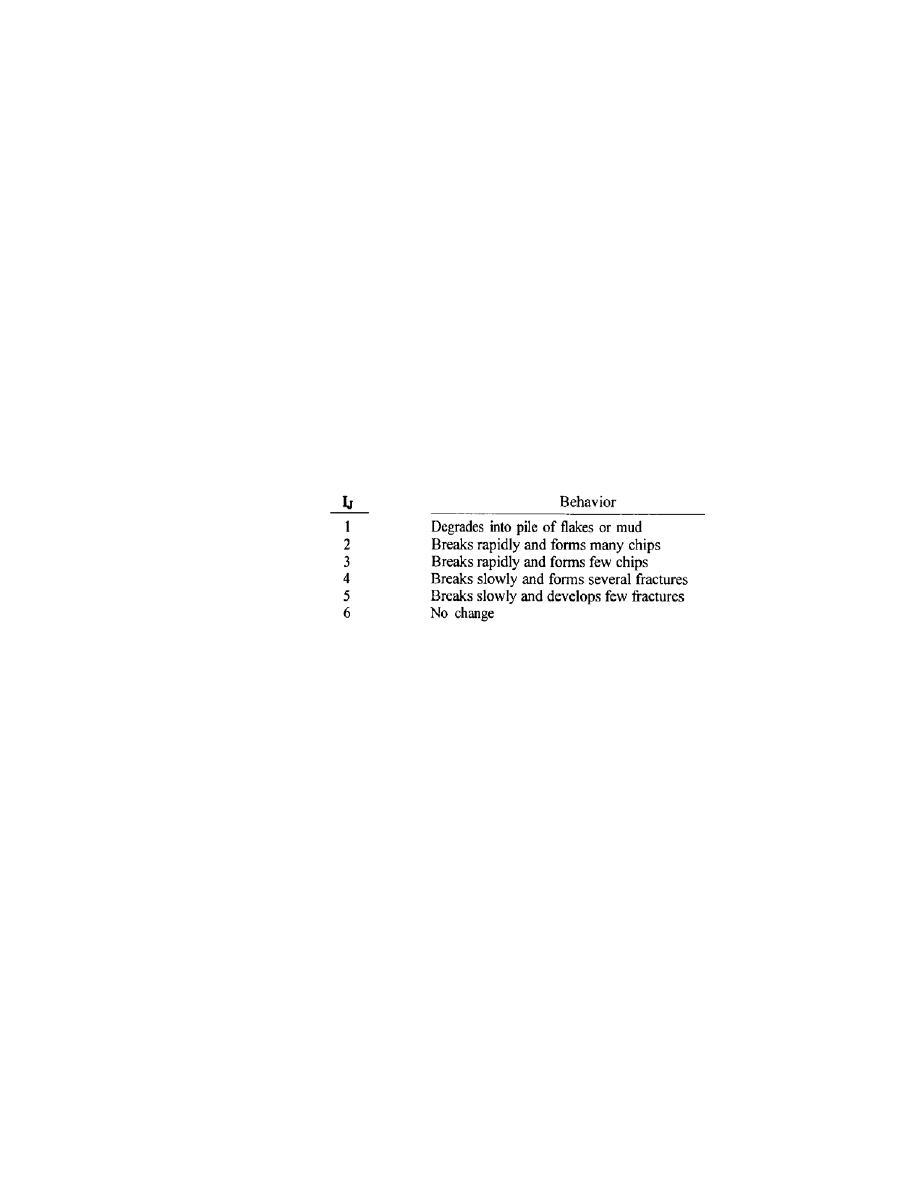
UFC 3-220-01N
15 AUGUST 2005
In situ material permeability characteristics for the design of construction
excavation dewatering systems can also be approximated from laboratory tests on
representative undisturbed samples. Laboratory permeability tests on undisturbed samples
are less expensive than in situ pumping tests performed in the field; however, laboratory tests
are less accurate in predicting flow characteristics.
8-3.3.2.2.6 Slake Durability of Shales. Some clay shales tend to slake when exposed to
air and water and must be protected immediately after they are exposed. The extent of slaking
also governs the manner in which they are treated as a backfill material (paragraph 8-3.3.3.3).
Slaking characteristics can be evaluated by laboratory jar-slake tests or slake-durability tests.
The jar-slake test is qualitative with six descriptive degrees of slaking determined
from visual observation of oven dried samples soaked in tap water for as long as 24 hours.
The jar-slake test is not a standardized test. One version of the jar-slake test is discussed in
FHWA-RD-78-141. Six suggested values of the jar-slake index IJ are listed below:
Shales with IJ values of 1 to 3 should be protected when occurring in excavated slopes and
compacted as soil if used for backfill.
The slake-durability test is a standardized test that gives a quantitative
description in percent by weight of material remaining intact at the conclusion of the test.
Details of the test are presented in FHWA-RD-78-141.
8-3.3.2.2.7 Dynamic Tests for Special Projects. Dynamic tests for special projects
The dynamic analysis of projects subject to seismic or blast induced loading conditions
requires special dynamic tests on both in situ and backfill materials. Tests required for
dynamic analysis include: cyclic triaxial tests; in situ density measurements; and tests to
determine shear wave velocities, shear modulus, and damping (ER 1110-2-1806).
8-3.3.2.2.8 In-situ Water Content. The in situ water content, including any seasonal
variation, must be determined prior to construction for materials selected for use as backfill.
Natural in situ water contents will determine the need for wetting or drying the backfill material
before placement to obtain near optimum water contents for placement and compaction.
ASTM D 2216 discusses the test method for determining water content.
8-58



 Previous Page
Previous Page
